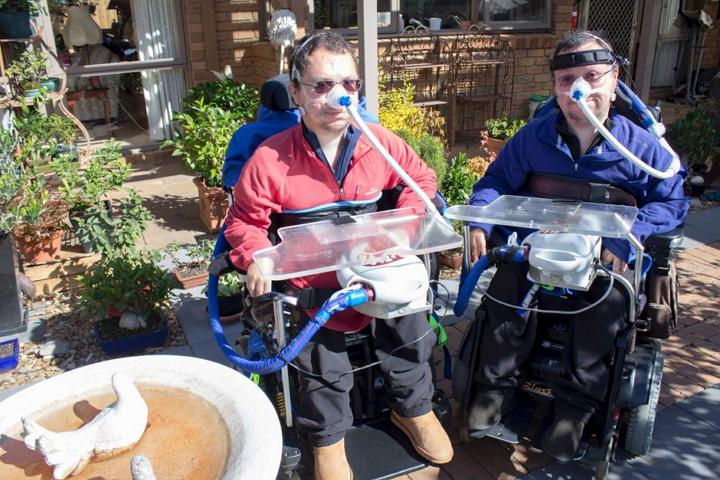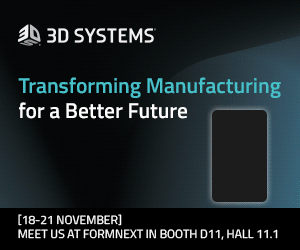Duchenne muscular dystrophy – or DMD – is a genetic disorder which causes progressive muscle degeneration and weakness in its victims. It’s caused by an absence of a protein called dystrophin which is responsible for keeping muscle cells functioning correctly, and the onset of the disease is often noted in early childhood between ages 3 and 5. While it primarily affects boys, it can also affect girls in rare cases .
The first signs of the disease are often weakness in the muscles of the hips, pelvic area, thighs and shoulders, and the problem can then spread to the voluntary muscles in the arms and legs. By the time a patient reaches their teens, the heart and respiratory muscles can also be affected.
Two Australian brothers, Nick and Chris Fryer, are intimately familiar with the malady, but they use 3D printing technology to take on the issues they face in daily life. Identical twins, the pair were diagnosed with DMD at the age of eight, and doctors said the prognosis was not good – they weren’t expected to live past age 21.
But that prediction never came to pass and now, at 37 years old, the pair are the oldest people with DMD in Australia. Though they need to wear ventilators controlled by movements of their mouths and fingertips all day, every day, the Fryer’s use 3D printing to build robots, wheelchair accessories and various computer modifications to make their lives more comfortable and productive.
 Their BonsaiBot prototype is typical of the ideas they’ve come up with. Developed from scratch and designed by Nick Fryer and Peter McKenzie, the robot uses 3D printed and laser cut parts, an Arduino Mega, a Pololu Dual VNH5019 Motor Driver Shield and an XBee S1 which was inspired by an old front-wheel-drive electric wheelchair Fryer and his brother once used to drive.
Their BonsaiBot prototype is typical of the ideas they’ve come up with. Developed from scratch and designed by Nick Fryer and Peter McKenzie, the robot uses 3D printed and laser cut parts, an Arduino Mega, a Pololu Dual VNH5019 Motor Driver Shield and an XBee S1 which was inspired by an old front-wheel-drive electric wheelchair Fryer and his brother once used to drive.
“We’ve always been interested in technology, even when we were very young,” Nick told abc.net.au. “When I was little, my dad taught me how to make model aircraft out of balsawood and glue, and my disability took that away from me, but now technology has given that ability back. I can design things on the computer and print them out on my 3D printer, and it’s fantastic.”
The pair also formed the Melbourne Eastern Suburbs Hackers, a group which focuses on creating technologies to enable people with disabilities, and they’re working hard to spread the news. Chris writes extensively about the hacker movement on the group’s blog.
“MESH started with one guy with an idea. Instead of just remaining an idea plagued by self-doubt and never happening like several of my ideas, I just went ahead and did it – not really knowing what I was doing,” Chris says. “This could have been another failed idea if I didn’t have a number of people to help me.”
The group is an innovation center with a maker space, hack space and hack lab and Chris calls it a place “where nerds can congregate to share their knowledge, learn and build things together.” He says it offers people from all walks of life a place to collaborate on projects to make dreams a reality.
“I think a lot (of people with disabilities) don’t even know this exists, and they don’t know what they can do,” Nick said.”What we want to do is to enable people with disabilities to design and create things for themselves. In the past, it was virtually impossible for someone like me to actually make something physical, but now with computers, computer-aided design and 3D printers it’s become relatively easy.”
Nick says he sees a time when advances in technology and design such as exoskeletons and prosthetics will eliminate disabilities completely.
What do you think about the work of brothers Chris and Nick Fryer? You can weigh in in the Muscular Dystrophy 3D Printing forum thread on 3DPB.com. Be sure to check out the video below.
Subscribe to Our Email Newsletter
Stay up-to-date on all the latest news from the 3D printing industry and receive information and offers from third party vendors.
Print Services
Upload your 3D Models and get them printed quickly and efficiently.
You May Also Like
Killer 3D Printing Applications: Car Seating
Bicycle seats are a 3D printing success story. Often made using Carbon’s technology, high-end road bike saddles are now on offer from most premium bike saddle brands. Retailing for over...
3D Printing News Briefs, November 22, 2025: Rebranding, Integration, Electronic Eyes, & More
We’ll start with a new software tool from AON3D in today’s 3D Printing News Briefs, and then we’ve got a lot of business, from Conflux Technology and Prima Additive to...
Formnext 2025: New Metal PBF 3D Printer, Serial Production Applications, & More
It’s Day 2 of Formnext 2025, where over 800 exhibitors from around the world have converged in Frankfurt for Europe’s premier additive manufacturing (AM) trade show. From exciting new printers...
Filtration System, AI-Driven Software, Photogrammetry, & More at Formnext 2025
Europe’s premier AM industry trade show, Formnext, began today in Frankfurt, Germany. From 3D printers to post-processing and more, we’re here to make sure you don’t miss a single announcement from...


































